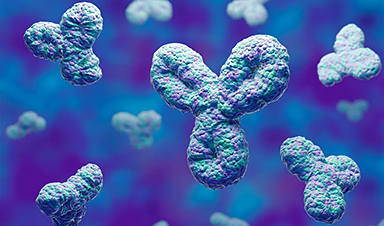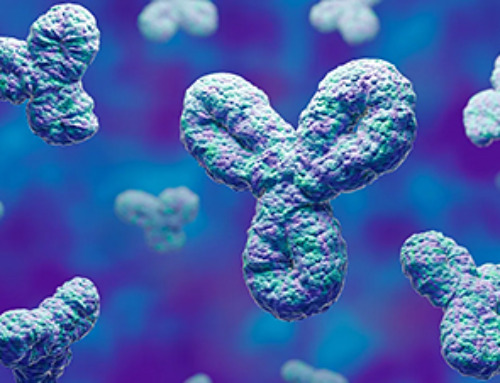Scientists from the Suzhou Institute of Biomedical Engineering and Technology (SIBET) of the Chinese Academy of Sciences and the South China University of Technology collaborated to create near-infrared (NIR)-powered nano-assemblies with size and charge dual transformation for the integration of photo-controlled chemotherapy and immunotherapy in breast cancer.
The findings of the study have been recently reported in Theranostics.
Nanotechnology has novel benefits in enhancing the bioavailability of substances that are poorly soluble, accomplishing well-regulated and targeted drug release, and incorporating various therapeutic methods on the same platform.
Nevertheless, there are many biological hurdles in real-world applications, including transvascular transport, blood circulation, dense tumor extracellular matrix and malformed tumor vessels, thus, the majority of the nanoparticles are mostly localized around the outer edges of the tumor, and it is hard to enter the tumor to exercise cell-killing effect.
During this study, the team engineered diselenide-bridged mesoporous organosilica nanoparticles as a reactive oxygen species (ROS)-responsive core for the loading of chemotherapeutic agent doxorubicin (DOX). They then coated an indocyanine green (ICG)-hybrid N-isopropyl acrylamide layer to create a thermosensitive shell.
The negatively charged thermosensitive layer prevents DOX leakage, rendering prolonged blood circulation time and high tumor accumulation.
Wenfei Dong, Researcher, SIBET
When irradiated with NIR light, mild photothermal effects enable the dissociation of the thermosensitive shell to accomplish negative-to-positive surface charge reversal. In the meantime, ICG-produced ROS cleaves the diselenide bond of the organosilica core, resulting in quick matrix degradation that creates DOX-comprising smaller fragments (115-20 nm).
Such a NIR light-triggered charge and size dual-transformable nano-assembly allows tumor buildup and deep penetration, improves chemotherapy effectiveness and prompts strong immunogenic cell death effects in vivo and in vitro.
In animal research, integrated with programmed cell death protein-1 checkpoint blockade, the nano-platform considerably obstructed major tumor development and pulmonary metastasis of breast cancer, significantly decreasing the harmful side effects of free drugs.
This research offers a new system for a safe and effective combination treatment for breast cancer. The researchers will alter the antibodies on the surface of the nano-assembly to improve the active targeting of tumors and endeavor to use the platform to transport gene-editing tools for gene therapy of tumors.
News
Specially engineered antibody delivers RNA therapy to treatment-resistant tumors
Elias Quijano, PhD; Diana Martinez-Saucedo, PhD; Zaira Ianniello, PhD; and Natasha Pinto-Medici, PhD, there are 25 other contributors, most from Yale's Department of Therapeutic Radiology and from the departments of genetics, molecular biophysics and [...]
Vaccinated women face fewer cervical cancer risks
New data from Denmark shows the HPV vaccine’s powerful long-term impact, while also revealing why cervical cancer screening is still essential. A Danish study published in the journal Eurosurveillance reports that women who received the human [...]
3D-printed implant offers a potential new route to repair spinal cord injuries
A research team at RCSI University of Medicine and Health Sciences has developed a 3-D printed implant to deliver electrical stimulation to injured areas of the spinal cord, offering a potential new route to [...]
Nanocrystals Carrying Radioisotopes Offer New Hope for Cancer Treatment
The Science Scientists have developed tiny nanocrystal particles made up of isotopes of the elements lanthanum, vanadium, and oxygen for use in treating cancer. These crystals are smaller than many microbes and can carry isotopes of [...]
New Once-a-Week Shot Promises Life-Changing Relief for Parkinson’s Patients
A once-a-week shot from Australian scientists could spare people with Parkinson’s the grind of taking pills several times a day. The tiny, biodegradable gel sits under the skin and releases steady doses of two [...]
Weekly injectable drug offers hope for Parkinson’s patients
A new weekly injectable drug could transform the lives of more than eight million people living with Parkinson's disease, potentially replacing the need for multiple daily tablets. Scientists from the University of South Australia [...]
Most Plastic in the Ocean Is Invisible—And Deadly
Nanoplastics—particles smaller than a human hair—can pass through cell walls and enter the food web. New research suggest 27 million metric tons of nanoplastics are spread across just the top layer of the North [...]
Repurposed drugs could calm the immune system’s response to nanomedicine
An international study led by researchers at the University of Colorado Anschutz Medical Campus has identified a promising strategy to enhance the safety of nanomedicines, advanced therapies often used in cancer and vaccine treatments, [...]
Nano-Enhanced Hydrogel Strategies for Cartilage Repair
A recent article in Engineering describes the development of a protein-based nanocomposite hydrogel designed to deliver two therapeutic agents—dexamethasone (Dex) and kartogenin (KGN)—to support cartilage repair. The hydrogel is engineered to modulate immune responses and promote [...]
New Cancer Drug Blocks Tumors Without Debilitating Side Effects
A new drug targets RAS-PI3Kα pathways without harmful side effects. It was developed using high-performance computing and AI. A new cancer drug candidate, developed through a collaboration between Lawrence Livermore National Laboratory (LLNL), BridgeBio Oncology [...]
Scientists Are Pretty Close to Replicating the First Thing That Ever Lived
For 400 million years, a leading hypothesis claims, Earth was an “RNA World,” meaning that life must’ve first replicated from RNA before the arrival of proteins and DNA. Unfortunately, scientists have failed to find [...]
Why ‘Peniaphobia’ Is Exploding Among Young People (And Why We Should Be Concerned)
An insidious illness is taking hold among a growing proportion of young people. Little known to the general public, peniaphobia—the fear of becoming poor—is gaining ground among teens and young adults. Discover the causes [...]
Team finds flawed data in recent study relevant to coronavirus antiviral development
The COVID pandemic illustrated how urgently we need antiviral medications capable of treating coronavirus infections. To aid this effort, researchers quickly homed in on part of SARS-CoV-2's molecular structure known as the NiRAN domain—an [...]
Drug-Coated Neural Implants Reduce Immune Rejection
Summary: A new study shows that coating neural prosthetic implants with the anti-inflammatory drug dexamethasone helps reduce the body’s immune response and scar tissue formation. This strategy enhances the long-term performance and stability of electrodes [...]
Scientists discover cancer-fighting bacteria that ‘soak up’ forever chemicals in the body
A family of healthy bacteria may help 'soak up' toxic forever chemicals in the body, warding off their cancerous effects. Forever chemicals, also known as PFAS (per- and polyfluoroalkyl substances), are toxic chemicals that [...]
Johns Hopkins Researchers Uncover a New Way To Kill Cancer Cells
A new study reveals that blocking ribosomal RNA production rewires cancer cell behavior and could help treat genetically unstable tumors. Researchers at the Johns Hopkins Kimmel Cancer Center and the Department of Radiation Oncology and Molecular [...]





















